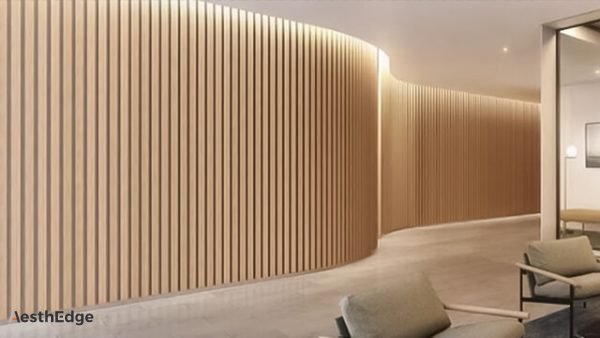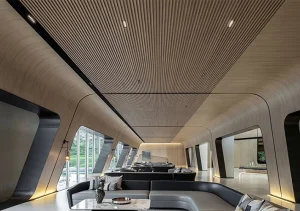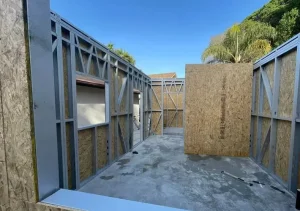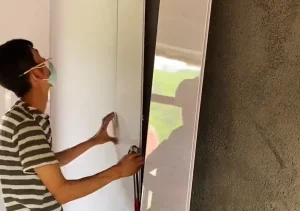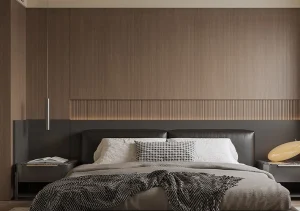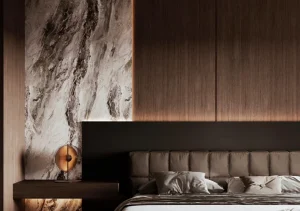Table of Contents
ToggleIntroduction
In the ever-evolving hospitality industry, hotel decoration has become more than just a matter of aesthetics — it is a strategic tool for creating unforgettable guest experiences and building brand identity. Among the many modern decorative materials, 3D wall panels have emerged as one of the most innovative and impactful design elements. Combining texture, depth, and artistic flair, they transform ordinary hotel interiors into immersive, visually dynamic environments.
From luxury five-star resorts to boutique hotels and themed accommodations, 3D wall panels are widely used to enhance both functionality and beauty. This article explores in depth the applications, advantages, material types, and market trends of 3D wall panels in hotel decoration, providing valuable insights for designers, architects, and hotel investors worldwide.
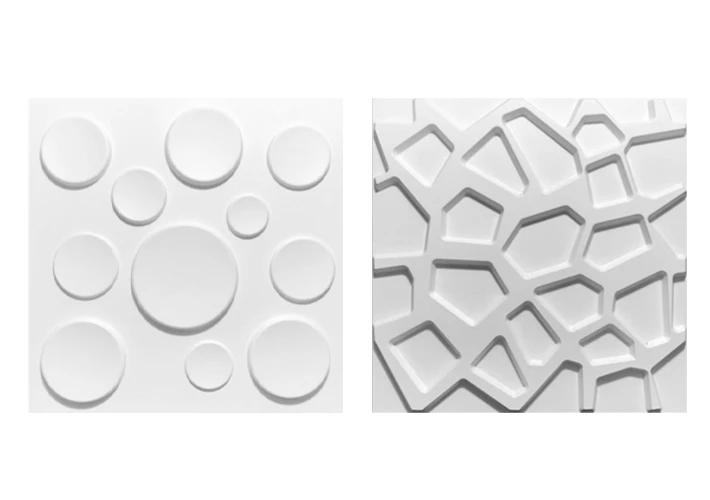
Understanding 3D Wall Panels
3D wall panels are decorative wall coverings that feature three-dimensional surface textures, creating a visually engaging and tactile effect. Unlike traditional flat panels or paint, these panels add depth, light, and shadow to interior walls.
Common Materials Used in 3D Wall Panels
PVC (Polyvinyl Chloride): Lightweight, water-resistant, and cost-effective — ideal for hotel interiors.
WPC (Wood Plastic Composite): Eco-friendly, durable, and suitable for both indoor and semi-outdoor applications.
Bamboo Charcoal Panels: Known for air purification and sound absorption properties.
Gypsum Panels: Often used for luxurious finishes with intricate carvings.
MDF (Medium Density Fiberboard): Provides a natural wood-like texture and can be painted or laminated.
PU (Polyurethane) Panels: Lightweight, moldable, and perfect for complex wall sculptures or classical themes.
Each material type offers unique performance and aesthetic advantages, allowing designers to choose based on the hotel’s theme, budget, and environment.
The Growing Importance of 3D Wall Panels in Hotel Design
Modern hotels no longer serve merely as places to sleep — they are destinations of experience. Guests seek comfort, inspiration, and a sense of uniqueness. 3D wall panels play a key role in achieving this by:
- Creating memorable visual impressions in lobbies and corridors.
- Enhancing sound insulation in guest rooms and meeting areas.
- Reflecting brand personality through customized designs.
- Improving durability and maintenance efficiency compared to wallpaper or paint.
In fact, design surveys indicate that over 68% of boutique hotels in Asia, Europe, and the Middle East now incorporate textured or 3D wall designs as a major interior feature.
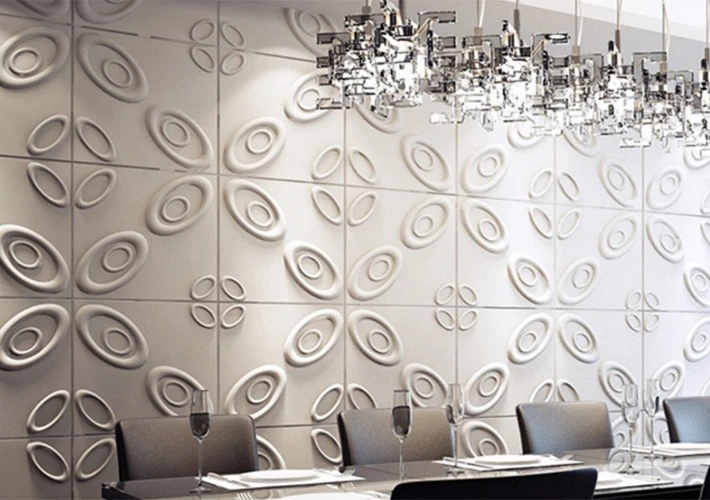
Key Advantages of Using 3D Wall Panels in Hotels
(1) Aesthetic Appeal and Versatility
3D wall panels can instantly upgrade the visual identity of a hotel. Their textures — from geometric patterns to organic waves — add depth and sophistication. Whether the hotel adopts modern minimalism, European luxury, or natural eco-style, 3D panels can be tailored to match perfectly.
(2) Acoustic Performance
Many materials used in 3D panels, such as bamboo charcoal or WPC, have sound absorption properties, reducing echoes and improving overall acoustic comfort — especially important in lobbies, restaurants, and conference halls.
(3) Easy Installation and Maintenance
Unlike marble or stone walls, 3D panels are lightweight and designed for modular installation. They can be easily cut and joined, reducing on-site labor time. Maintenance is simple — most panels can be cleaned with a damp cloth without fading or cracking.
(4) Environmental Sustainability
WPC and bamboo charcoal 3D panels are made from eco-friendly, recyclable materials, aligning with the global hotel industry’s push toward sustainable design and green certification.
(5) Customization Options
Manufacturers can produce panels in custom sizes, textures, and colors. Some hotels even request logo-engraved or themed 3D designs to reinforce branding.
Application Areas of 3D Wall Panels in Hotel Decoration
(1) Hotel Lobby
The lobby is the heart of any hotel — the first impression for every guest. Installing 3D wall panels behind the reception desk, around columns, or in feature walls can create an immediate visual impact. Metallic or marble-textured panels give a luxurious atmosphere, while geometric or wave designs add a sense of modernity.
(2) Guest Rooms
In guest rooms, 3D wall panels are often installed behind the headboard as an accent wall. They not only enhance comfort but also serve as a sound buffer, improving privacy and relaxation. Materials like PVC or PU are particularly popular for their lightweight and waterproof properties.
(3) Corridors and Public Spaces
Corridors often appear dull or narrow; adding 3D panels can break the monotony. Light-reflective surfaces or subtle textures can create depth and openness, improving spatial perception. For high-traffic zones, scratch-resistant WPC panels ensure long-term durability.
(4) Restaurants and Bars
Restaurants within hotels benefit from decorative 3D panels that set the ambiance. For example, bamboo charcoal panels can absorb odors and humidity, maintaining a pleasant dining environment. Wooden or stone-look designs enhance warmth and comfort.
(5) Conference and Meeting Rooms
Sound insulation is vital in business zones. Acoustic 3D panels help reduce reverberation, ensuring clear communication and a professional environment.
(6) Spa and Wellness Areas
In spa zones, 3D panels with waterproof and anti-mold features (such as PVC or WPC) are ideal. Natural designs like wave, bamboo, or sand textures create a relaxing atmosphere.
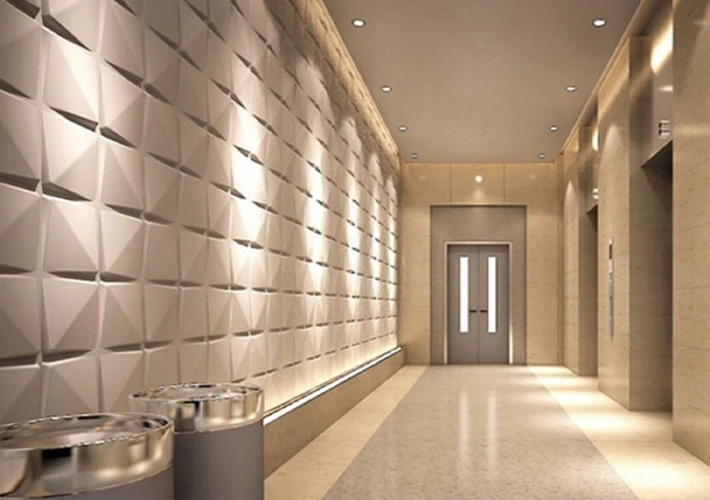
Popular 3D Wall Panel Styles in Modern Hotels
Geometric Patterns: Clean lines and modern elegance for business hotels.
Organic Flow Designs: Curved textures for spa resorts or wellness centers.
Wood Grain Finishes: Natural aesthetics that fit eco-themed hotels.
Stone & Marble Effects: Luxurious finishes for five-star hotels.
Metallic Surfaces: Futuristic designs for high-end urban hotels.
Custom Artistic Panels: Bespoke designs integrating brand logos or cultural motifs.
Each style plays a distinct role in shaping the mood, identity, and guest experience of the hotel.
Installation and Maintenance Considerations
Installation Steps:
Surface Preparation: Ensure walls are flat, clean, and dry.
Panel Layout Planning: Mark layout lines for balanced symmetry.
Fixing Method: Panels can be attached using glue, screws, or interlocking clips.
Edge Finishing: Use trims or moldings for a seamless appearance.
Lighting Integration: Combine with LED backlighting for enhanced 3D effect.
Maintenance Tips:
Use a soft, damp cloth for cleaning; avoid harsh chemicals.
Periodically inspect for moisture or peeling (especially in humid areas).
Refinish or repaint MDF or wooden panels every few years if needed.
With proper installation and maintenance, high-quality panels can last 10–15 years or more without losing texture or color.
Market Trends and Future Outlook
The global market for 3D wall panels is expanding rapidly, driven by the hospitality industry’s pursuit of differentiation and sustainable materials. According to industry data:
- The global 3D wall panel market is projected to reach USD 2.4 billion by 2030, growing at a CAGR of over 6.5%.
- Asia-Pacific (particularly China) is the main production hub, supplying large volumes to Europe, the Middle East, and North America.
- Demand for eco-friendly WPC and bamboo panels has increased by more than 30% in the past three years due to sustainability trends.
- Custom 3D design services are becoming standard among high-end hotels.
With increasing demand for immersive experiences and environmental consciousness, 3D wall panels are expected to become a core decorative element in next-generation hotel design.
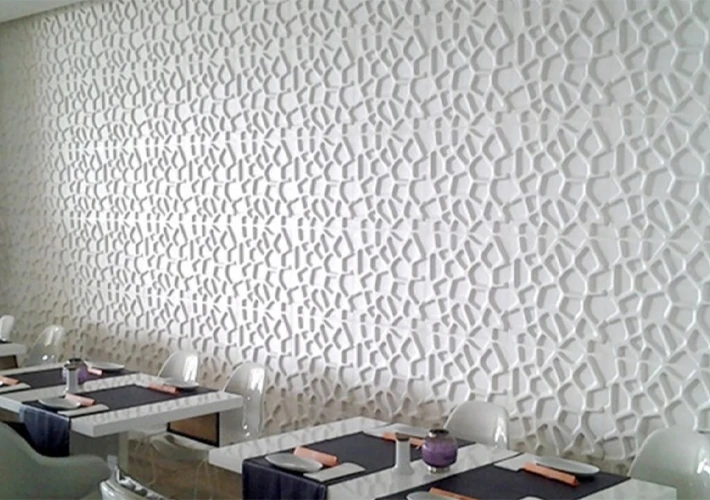
Choosing the Right 3D Wall Panel Supplier
When sourcing 3D wall panels for hotel projects, buyers should evaluate:
Material Quality and Certificates (e.g., fire resistance, waterproof rating).
Production Capacity and Delivery Time — essential for large-scale projects.
Customization Support — design flexibility and color matching.
Factory Experience — expertise in export standards and international packaging.
After-Sales Service — long-term technical support.
Choosing a reliable manufacturer from China with OEM/ODM capabilities ensures consistent quality and cost advantages for global buyers.
Conclusion
3D wall panels have revolutionized hotel decoration by merging artistic design, acoustic comfort, and functional durability. Their versatility allows them to adapt to any space — from luxurious lobbies to tranquil spas. With their expanding market and sustainable production, they are set to remain a key decorative trend in the global hospitality industry.
For hotel owners, architects, and interior designers seeking innovative materials, 3D wall panels offer an unparalleled opportunity to enhance space aesthetics while maintaining practicality.
If you are looking for a professional 3D wall panel manufacturer and supplier in China, our factory provides a wide range of PVC, WPC, bamboo charcoal, and PU panels customized for hotel projects worldwide.
Contact us today to discuss your design needs and get competitive wholesale prices for your next hotel decoration project.

